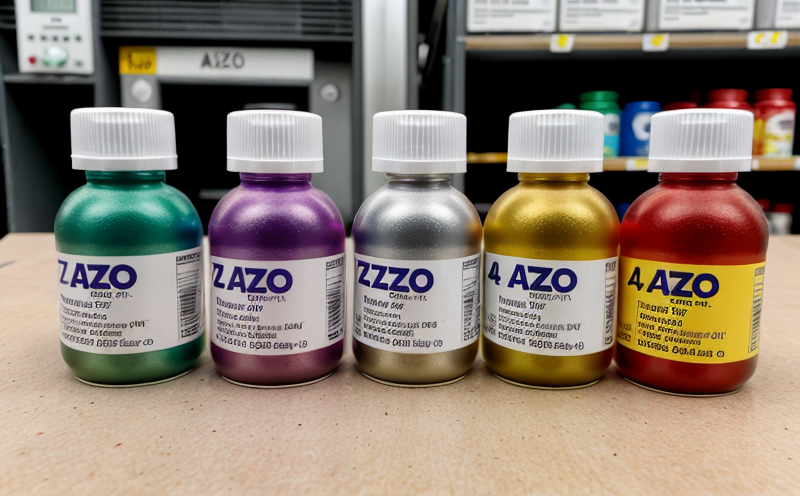Determination of mercury residues in textile coatings
The determination of mercury residues in textile coatings is a critical process within the textile sector. As quality managers and compliance officers navigate regulatory requirements, ensuring that products meet safety standards is paramount. This service addresses the need for accurate and reliable analysis to identify any potential mercury contamination in textile coatings.
Mercury, particularly in its elemental form (Hg0), can pose significant health risks if present at high concentrations. In textiles, mercury contamination often arises from improper handling of pigments or coating formulations containing mercury compounds. This service ensures that your products meet stringent international standards such as ISO 14976:2015, which specifies the procedure for determining trace amounts of mercury in textile materials.
The process involves several key steps. Initially, a representative sample of the textile coating is prepared according to specific protocols outlined by relevant standards. This may include grinding or cutting the material into small pieces to ensure uniformity and representativeness. Once prepared, the sample undergoes digestion using appropriate reagents to release mercury from its binding matrix.
Following digestion, the solution containing mercury is analyzed using atomic absorption spectroscopy (AAS). AAS provides highly sensitive detection capabilities that allow for accurate quantification of even trace amounts of mercury. The method adheres strictly to ISO 17025 standards, ensuring precision and reliability in every measurement.
The results obtained from this analysis are crucial for several reasons. They enable manufacturers to comply with regulatory limits set by authorities like the European Union’s REACH regulations or the California Proposition 65. By identifying mercury residues early in the production process, companies can take corrective actions to eliminate sources of contamination and maintain product safety.
The importance of this service extends beyond mere compliance; it also supports continuous improvement efforts within R&D departments. Understanding where and how mercury enters the supply chain allows for targeted innovations aimed at reducing environmental impact while maintaining product performance.
Moreover, accurate determinations contribute to enhancing consumer trust by demonstrating a commitment to high-quality standards and responsible manufacturing practices. In an era marked by increasing awareness about sustainable consumption patterns, such transparency fosters brand loyalty among environmentally conscious consumers.
Benefits
- Ensures compliance with international safety regulations like ISO 14976:2015 and REACH.
- Identifies potential health hazards early in the production process, facilitating timely corrections.
- Promotes continuous improvement through enhanced understanding of contamination sources.
- Enhances consumer trust by upholding rigorous quality standards and responsible manufacturing practices.
- Aids in meeting environmental sustainability goals by minimizing mercury emissions into ecosystems.
Quality and Reliability Assurance
The reliability of our testing services is underpinned by rigorous quality management systems certified to ISO 17025. This ensures that all analytical procedures are conducted consistently across different batches, reducing variability in results. Our team employs advanced instrumentation calibrated regularly against national standards to maintain accuracy throughout the analysis.
We also adhere strictly to traceability protocols outlined in ISO/IEC Guide 98-1:2008, which helps ensure that every step of sample handling and processing can be traced back to its origin. This not only enhances confidence in our findings but also aids regulatory bodies conducting audits or inspections.
Our commitment to quality does not stop at laboratory operations; it encompasses the entire supply chain from raw material sourcing through final product release. By integrating this service into your production workflow, you gain valuable insights that can drive informed decision-making throughout various stages of development and manufacturing.
Environmental and Sustainability Contributions
The elimination of mercury residues from textile coatings plays a vital role in protecting both human health and the environment. By preventing mercury from entering waste streams or being released into air, water, or soil during manufacturing processes, we contribute significantly to reducing pollution levels.
- Reduces risk of bioaccumulation in aquatic ecosystems due to reduced release of mercury compounds.
- Promotes safer disposal practices for textile waste by minimizing hazardous material content.
- Supports circular economy principles by encouraging the reuse and recycling of textiles without compromising safety standards.
Beyond these immediate benefits, adopting this service aligns with broader sustainability goals such as reducing carbon footprints associated with manufacturing processes. It underscores a company’s dedication to long-term environmental stewardship, which is increasingly becoming a key consideration for consumers when making purchasing decisions.





